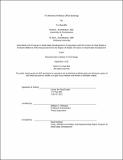| dc.contributor.advisor | William C. Wheaton. | en_US |
| dc.contributor.author | Wei, Yu-Hua, S.M. Massachusetts Institute of Technology | en_US |
| dc.contributor.other | Massachusetts Institute of Technology. Center for Real Estate. Program in Real Estate Development. | en_US |
| dc.date.accessioned | 2013-02-15T14:41:47Z | |
| dc.date.available | 2013-02-15T14:41:47Z | |
| dc.date.copyright | 2012 | en_US |
| dc.date.issued | 2012 | en_US |
| dc.identifier.uri | http://hdl.handle.net/1721.1/77128 | |
| dc.description | Thesis (S.M. in Real Estate Development)--Massachusetts Institute of Technology, Program in Real Estate Development in Conjunction with the Center for Real Estate, 2012. | en_US |
| dc.description | Cataloged from department-submitted PDF version of thesis. This electronic version was submitted and approved by the author's academic department as part of an electronic thesis pilot project. The certified thesis is available in the Institute Archives and Special Collections. | en_US |
| dc.description | Includes bibliographical references (p. 103). | en_US |
| dc.description.abstract | This paper is to define the demand and supply factors and to develop a system to forecast the future development of medical office buildings. At this juncture of time when the health care industry is facing historical changes due to demographic shift, economic challenges and legislative moves, understanding the market mechanism of medical office buildings that provide easy accesses for medical service to aging population, carry lower costs for health care system, and promote the preventive care in medical practices has never been more critical. Medical office buildings as a real estate product type have unique market and development mechanism. They house medical services and have commercial and retail real estate characteristics. To understand the demand and supply of medical office buildings, health care industry that provide medical services, population consuming medical services and real estate industry develop and manage the physical space need to be observed. By using panel regression to analyze historical economic, population and health care employment data across metropolitan areas, we can establish a system that explains the medical office building market. We further quantify the future medical office building demand based on the forecasted economic data and the model established in this paper. The future development of medical office buildings is intricately tied to many factors including the trends predicating the scale and speed of the development. Using the historical events as guidelines and the system established, this paper presents positive outcomes for the demand of medical office buildings under different scenarios. | en_US |
| dc.description.statementofresponsibility | by Yu-Hua Wei. | en_US |
| dc.format.extent | 140 p. | en_US |
| dc.language.iso | eng | en_US |
| dc.publisher | Massachusetts Institute of Technology | en_US |
| dc.rights | M.I.T. theses are protected by
copyright. They may be viewed from this source for any purpose, but
reproduction or distribution in any format is prohibited without written
permission. See provided URL for inquiries about permission. | en_US |
| dc.rights.uri | http://dspace.mit.edu/handle/1721.1/7582 | en_US |
| dc.subject | Center for Real Estate. Program in Real Estate Development. | en_US |
| dc.title | The market of medical office buildings | en_US |
| dc.type | Thesis | en_US |
| dc.description.degree | S.M.in Real Estate Development | en_US |
| dc.contributor.department | Massachusetts Institute of Technology. Center for Real Estate. Program in Real Estate Development. | en_US |
| dc.contributor.department | Massachusetts Institute of Technology. Center for Real Estate | |
| dc.identifier.oclc | 825119701 | en_US |
